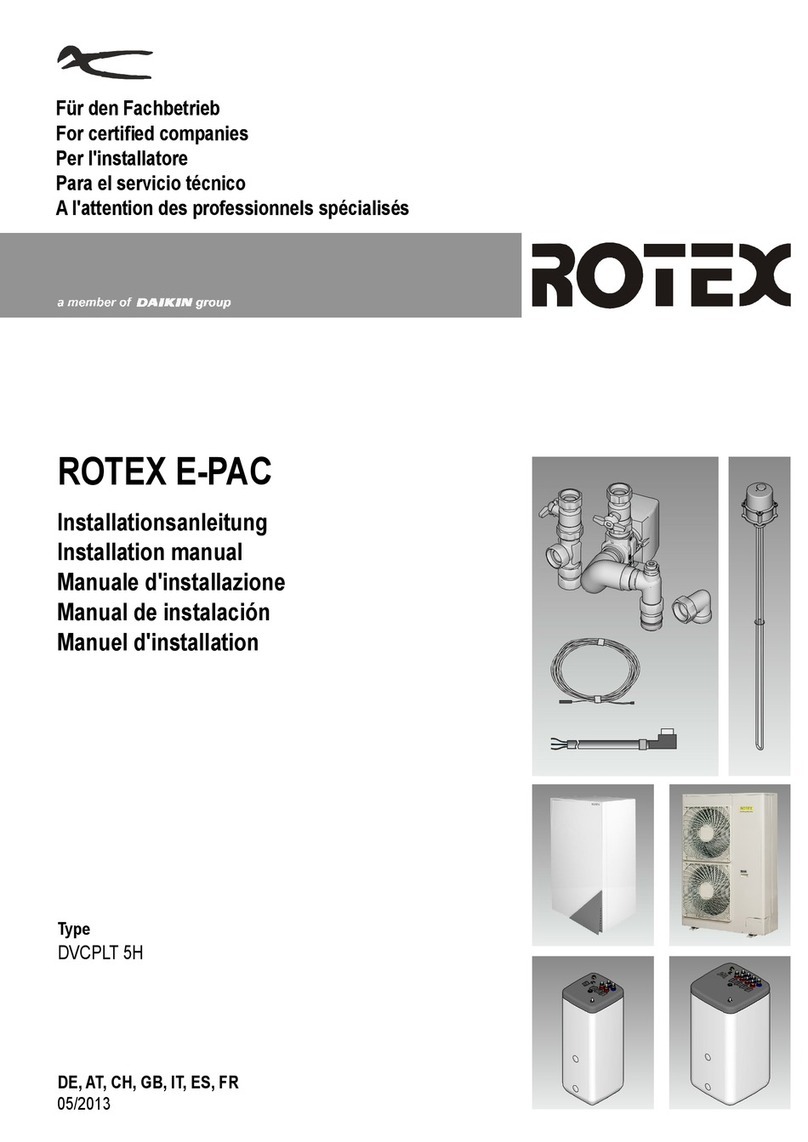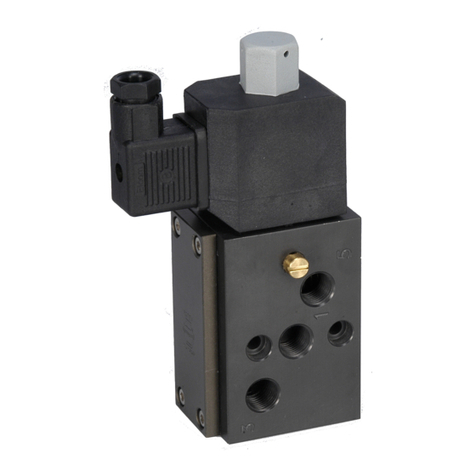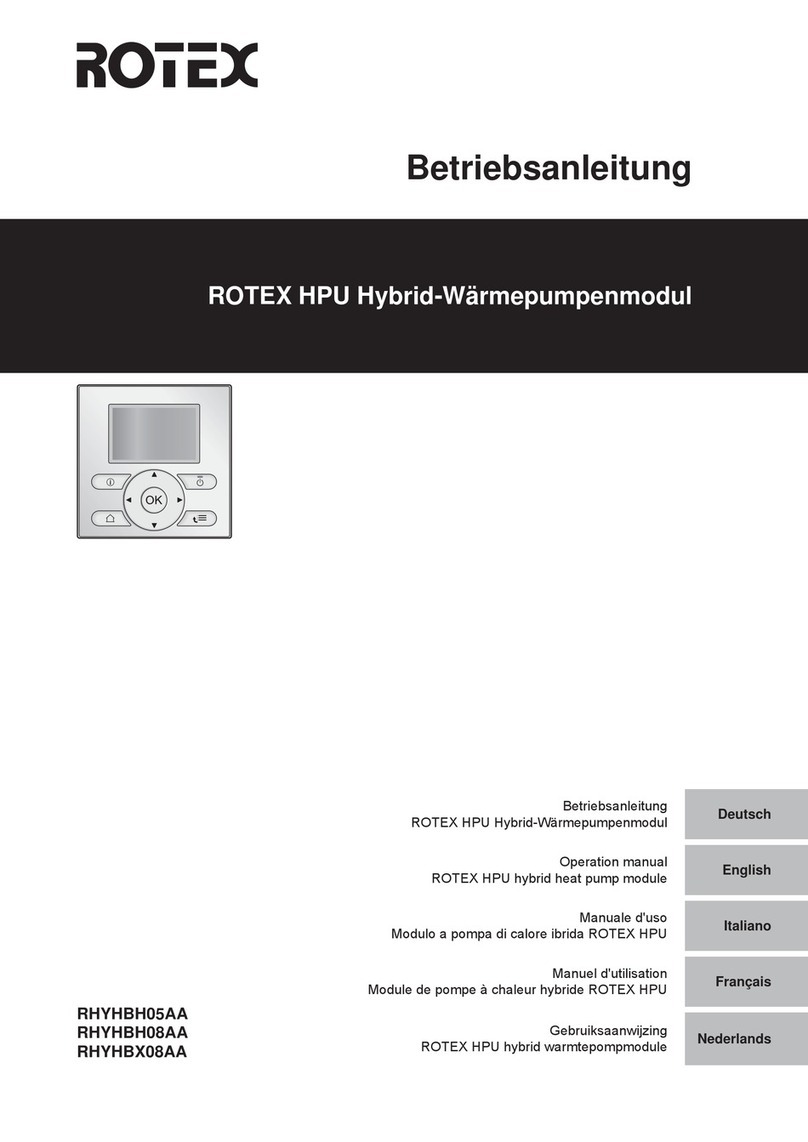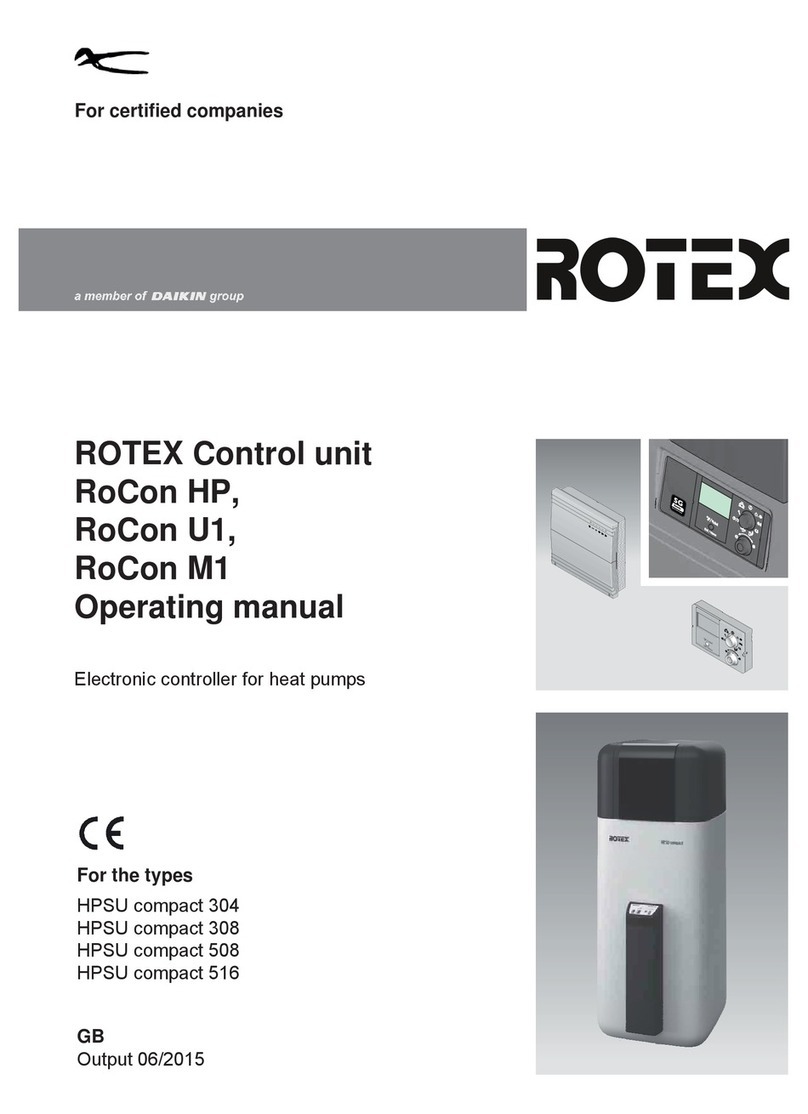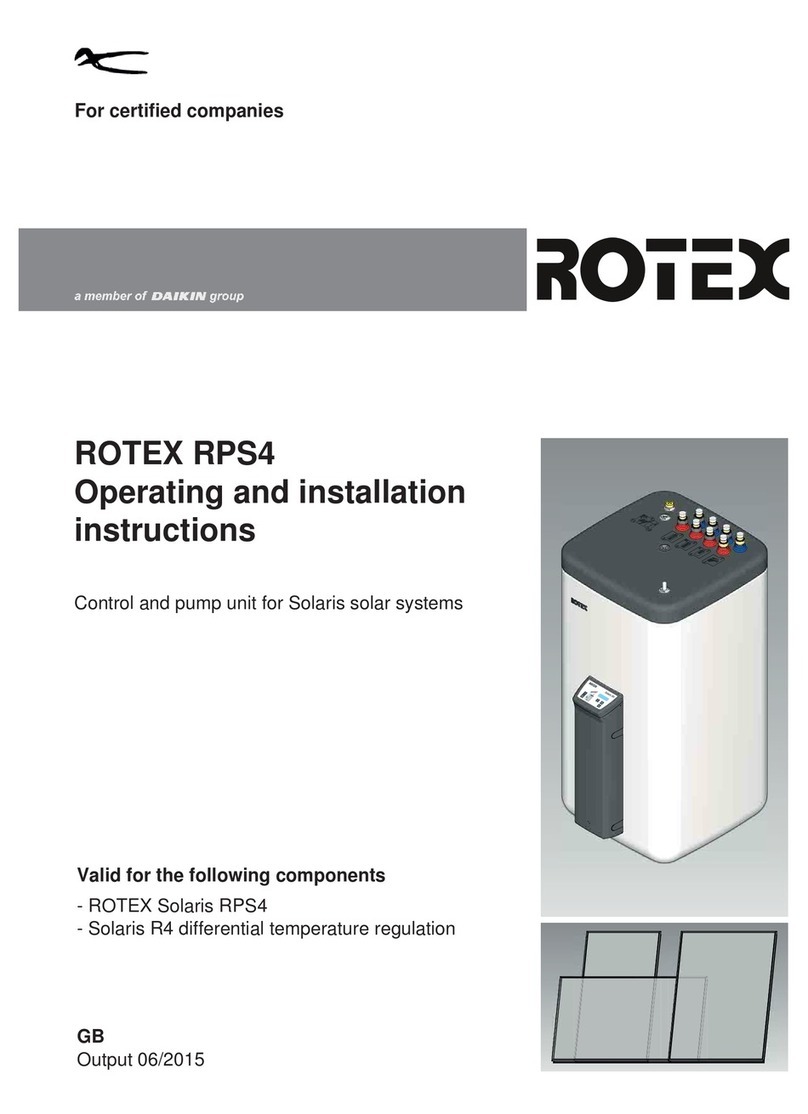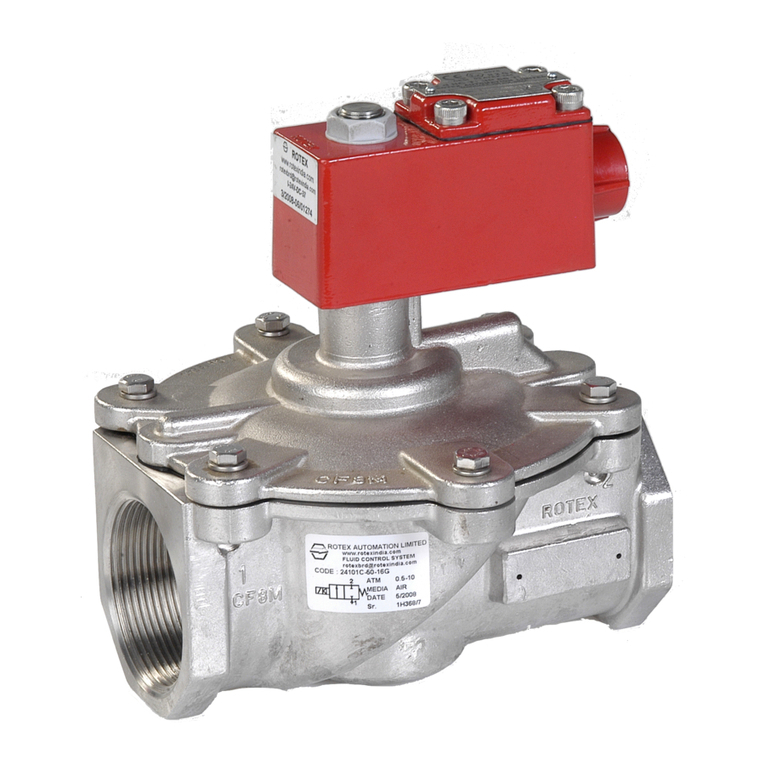
IM No. : IM/V/0046,
Rev. 0 dt. 23.08.2011
Page 4 of 7
d) Flush lines before installing the valve.
e) To avoid pressure drop and to achieve optimum parameters, Pipe / Tube / Fitting from the source of
pressure to the valve and to the connected equipment should have ID which is NW (Orifice) of the
valve.
f) To avoid pressure drop, if more than one valve is being operated simultaneously from a common header,
then minimum ID of the header can be calculated as under.
ID Header = (NW2n)
n = Number of Valves operating at a time and which are connected to a common header,
NW = Orifice of the Valve.
g) Incorporate filter in the line to avoid hard particles entering into the valve.
h) The valve should be installed for the media for which it is intended for. This is to avoid the malfunction of
seals and the valve. In case if you intend to use valve for media other than the one specified on that
valve, check compatibility of media to Body Seal material and grease. Consult ROTEX in case if any
doubt.
i) Do not try to drill any additional holes or machine, modify any of the valve components.
j) In case if the valve is used for dangerous fluid gas/liquid then, the user is hereby advised to maintain
during operation and maintenance of the valve below LEL or above UEL to avoid explosion due to
internal spark as the valves have not been assessed for the same.
k) Inlet pressure does not exceed rated pressure.
l) Hemp-Filaments, ‟Jute‟ or even Teflon-Ribbons are normally not required, as the port connections of
ROTEX Valve is accurately machined.
m) To avoid over lap of the Teflon ribbon or cuts generated while tightening, getting carried away into the
valve. Do not cover first two thread pitches with Teflon tape or sealant.
n) For Solenoid Valve to be installed in European Union, check the applicability for ATEX, PED
Directives. Refer separate Instruction Manual for ATEX approved Solenoid Valve.
2. Provide Dust Cap on the exhaust port or ensure that the valve is mounted such a way that dust particles / rain
water / process fluid do not enter into the valve through exhaust port of the valve. You can connect bend pipe of
ID > NW of the valve so that the exhaust port is not directly (straight) open into the atmosphere.
3. The process fluid etc.: do not fall on the valve body.
4. In case if the surrounding atmosphere has traces or some other substance other than Air, check its compatibility
with the Body material of the valve, Solenoid enclosure & other exposed parts.
5. In case if the valve is installed in potentially Hazardous area, check for the temperature class of the Solenoid to
avoid explosion due to heated Solenoid / other components.
6. Provide fuse of proper rating to avoid excess current passing through the Solenoid and thereby avoiding over
heating.
7. It is not likely however; the user is advised to protect the valve against lightening as the same is not assessed.
8. Check internal components (wetted) parts for its compatibility with fluid passing through the valve.
9. It is recommended to replace all the Rubber Parts including Plunger Assembly (Repair Kit –Code 99) in
case if the valve is to be installed and put in service after 2 years from the date of manufacture.
ELECTRICAL
1. Verify name plate affixed on the Solenoid.
2. Connect the power supply according to the voltage rating of the Solenoid
3. Ensure that the cover of Junction Box/Terminal Box is properly tightened wherever applicable.
4. Install valve in such a way that the rain water / other process fluid dripping along the cable does not fall on the
SOV and has no possibility to run along the cable and enter into the Terminal area.
5. Fill in the space between cable and gland entry with a proper sealant. If necessary, you may mount the valve
upside down or in any other direction.
6. Ensure that the Solenoid enclosure meets process and local authority requirement.
7. The Plug In, Terminal Box, FPJB, IS Solenoids are provided with test leads. Remove them before final
installation.
8. Check for proper connections for the Solenoid which are polarity sensitive e.g. (a) Latched Solenoid (b) EEx ia
Solenoid.
9. Refer separate manual for construction of the Solenoid and for specific instructions related to Solenoid
e.g. (a) EEx ia (b) Latched Solenoid (c) EExd Solenoid IP 67,IP 54
10. Ensure that the solenoid construction is selected properly meeting the environment in which the valve is supposed
to be installed e.g. use of Exd or Ex ia solenoid for valve to be installed in hazardous location or Weatherproof
Solenoid having IP 67 for outdoor installation.
11. Flying Lead Solenoid is not recommended to be used for outdoor or indoor application where water/liquid
splashing or high humidity is present.
